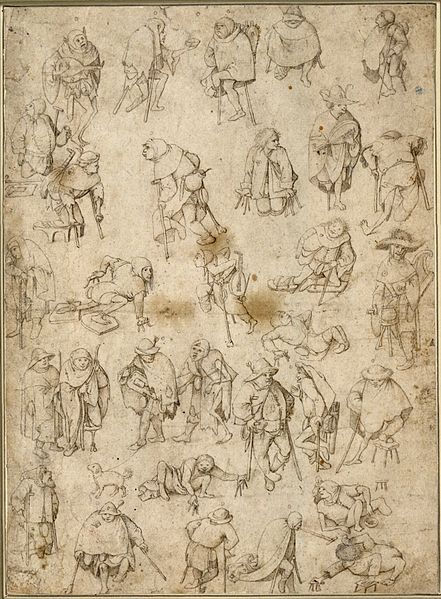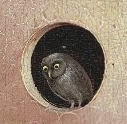







Robert L. Delevoy in his Bosch: Biographical and Critical Study, Skira, 1960, articulated the view that Bosch could have taken some kind of phantasy inducing drug.
There is no denying that the world Bosch shows us is a world of dreams. Can these strange visions have been due to drug-taking? Dare we assume that the painter resorted to some phantasmogenic drug so as to give free rein to his subconscious self and attain one of those "abysses of the psyche" to which Henri Michaux had access under the influence of mescaline? As it so happens, a recent discovery lends support to this theory. Professor Peuckert of Gottingen University unearthed the recipe for a stimulant named "witches' pomatum" in a 16th century book, made some, and tested it on several persons. All, after a deep sleep of twenty hours, had the same tale to tell; all had dreamed of flying, of orgies in the company of satanic creatures, of visits to the netherworld. To suggest that Bosch may have used similar means to attain a region of the personality normally inaccessible, is in no way to belittle the value of his work. Far from impairing the creative faculties, drugs can stimulate them. Rimbaud, Huxley, Artaud and Michaux in our own time testify to this.
Terence McKenna even gave a lecture on the hallucinogenic sources of Bosch.
Terence K. McKenna (1993, 26 Aug) On Hieronymus Bosch. Esalen Institute Media Center, Big Sur CA. Presented: Esalen Institute.
Another suggestion was that Bosch was affected by ergot, the fungus that sometimes grew on rye. A number of non-scholarly commentators continue to advance this hypothesis. It seems however, an empty, poorly thought out suggestion as it does not take into account the intense focus and concentration that Bosch must have had over many, many months, in order to create his large, complex, structured paintings. How he could have done this while suffering such profound mental disfunction is totally unclear.
 A more realistic idea, advanced in an article by by Isabel Moran Suarez El Fuego de San Antonio: Estudio del Ergotismo en la Pintura del Bosco, Asclepio, Vol XLVIII-2-1996, suggests that Bosch's imagery of cripples and distorted bodies may have been influenced by him observing some of his countrymen severly affected by ergot poisoning, which can ultimately lead to convulsive seizures, gangrene and the consequent amputation of feet. She notes a drawing by Bosch (or possibly Breughel) of such crippled individuals.
A more realistic idea, advanced in an article by by Isabel Moran Suarez El Fuego de San Antonio: Estudio del Ergotismo en la Pintura del Bosco, Asclepio, Vol XLVIII-2-1996, suggests that Bosch's imagery of cripples and distorted bodies may have been influenced by him observing some of his countrymen severly affected by ergot poisoning, which can ultimately lead to convulsive seizures, gangrene and the consequent amputation of feet. She notes a drawing by Bosch (or possibly Breughel) of such crippled individuals.She notes that "the severed foot is one of the most repeated in the Bosch's panel paintings, appearing in several works, as in the Garden of Delights and in the central panel of the Temptation of St Anthony triptych in Lisbon". This seems rather scanty evidence to support her hypothesis, as she immediately conceeds and proceeds to outline some alternative views, but nevertheless she concludes "Bosch, a relentless critic of his time responsive to the popular consciousness, portrays not only physically but psychologically, the disease of ergotism seen in beggars and cripples, which plunged medieval Europe into the deepest fear of death."
Laurinda Dixon, temporarily abandoning her alchemical interpretation, Bosch's 'St. Anthony Triptych' - An Apothecary's Apotheosis. Art Journal 44 (1984) 119, analyses Bosch's Temptation of St Anthony as incorporating a number of facets of the disease St Anthony's Fire, usually identified as ergot poisoning. She finds depictions of the disease and methods for treating it medically, even finding structures in the painting which she parallels with distillation apparatus used by pharmacists of the time.






